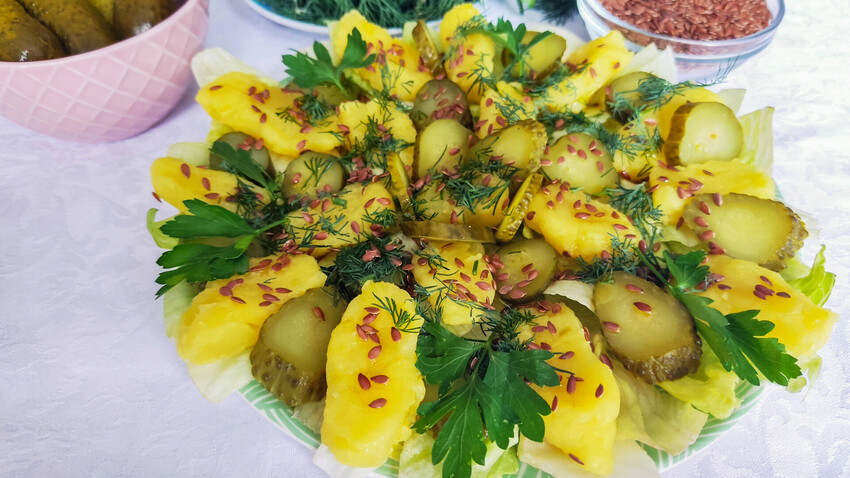
A simple and nutritious potato dish that you probably haven't tried.
Olga BrovkinaTalalui has a distinguished pedigree in the culinary history of Smolensk, which is located on the western border of Russia, about 400 km from Moscow. Just like in nearby Belarus, which the Smolensk Region also borders, potato dishes are very popular among the locals.
Talalui is one of those cherished potato dishes. By the way, in translation from the Belarusian language, the word talalui means “fool”. In one 19th century dictionary of the Russian language, talalui was said to mean “chatty”. Somehow, the word caught on among peasants as the name for this recipe. Another dictionary described talalui as "a dish made from boiled and mashed potatoes, cooled, cut into pieces, buttered, and eaten."
In general, this is true. Talalui is a simple, everyday dish primarily composed of potatoes, along with vegetable oil, ground flaxseed, and salt. To prepare it, the potatoes must first be boiled with the skin on. Then they are peeled, mashed and salted. Nothing new, but the way they serve it in the Smolensk Region has always been quite original.
Once the mashed potato mixture was ready, it was tightly packed into a large container resembling a pie, which in turn was then sliced into individual pieces for easy consumption, either by hand or with a fork. Before serving, the Talalui pieces were drizzled with vegetable oil and sprinkled with ground flaxseed.
Talalui held a special place in the local cuisine, especially during Orthodox fasting periods, such as Lent just before Easter. The dish was satisfying, offering a sense of satiety even when religious dietary restrictions were being observed.
Over time, the presentation of Talalui has changed. The traditional pie-like form gradually transformed into individual potato patties. This was done for easier portioning.
What’s more, fresh herbs became a prominent feature, adding a burst of vibrant flavors and enhancing the dish’s overall aromatic appeal. The inclusion of pickled cucumber balances the richness of the potatoes and adds a refreshing element to each bite. Let’s try it!
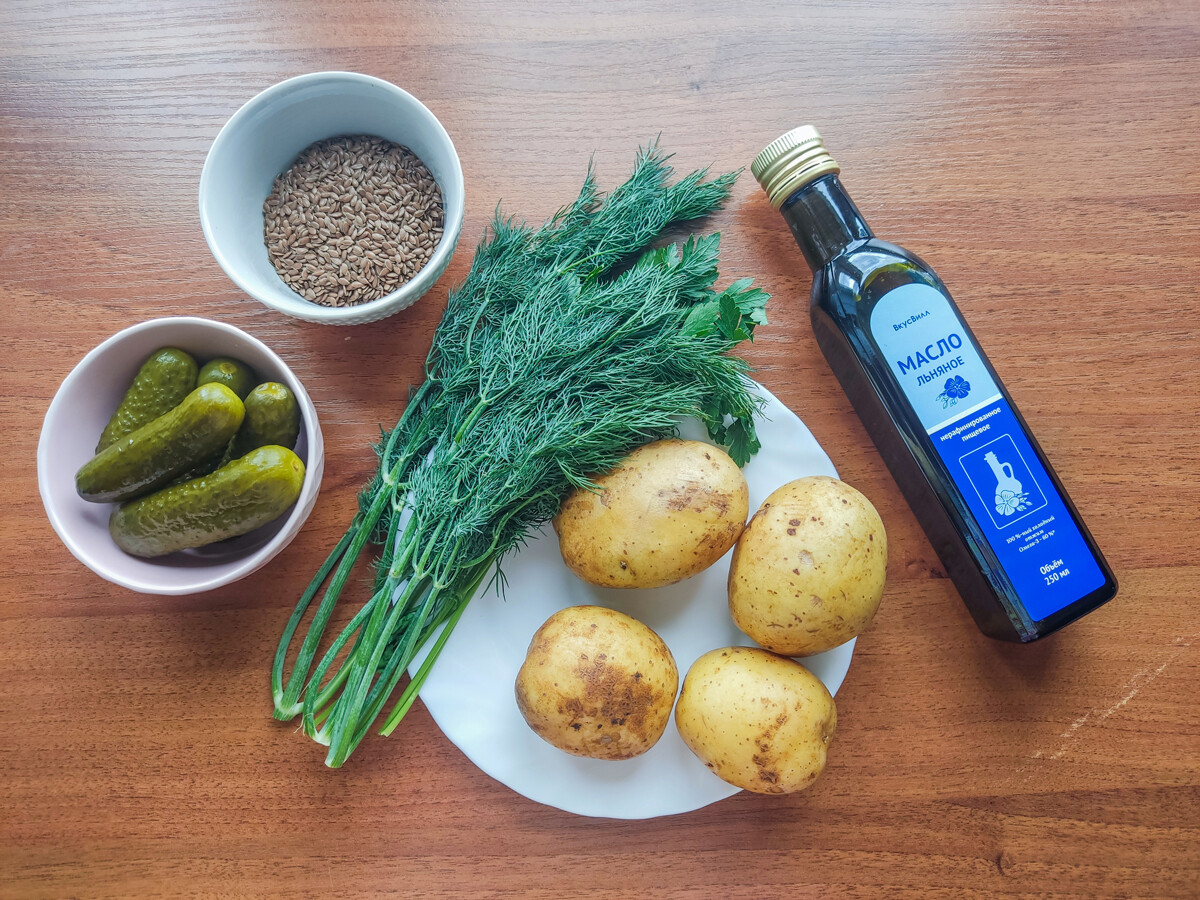
1. Start by washing the potatoes thoroughly. Leave the skins on for a more rustic texture and flavor. Place the potatoes in a pot and add enough water to cover them. Add a pinch of salt to the water. Bring the water to a boil over medium heat and cook the potatoes until tender (about 20 minutes).
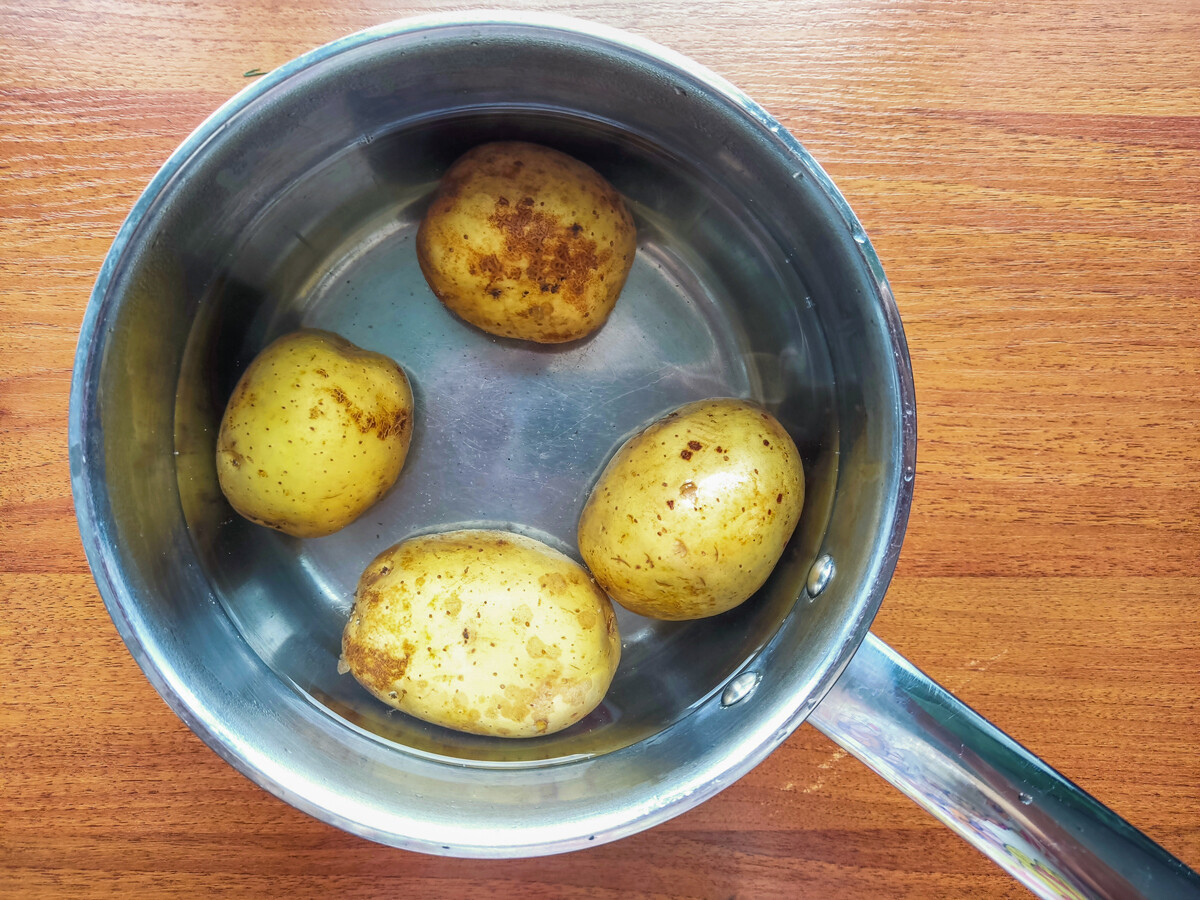
2. Once the potatoes are cooked, drain the water and allow them to cool. Once they’re cool enough to handle, remove the skins by gently peeling them off or using a knife.
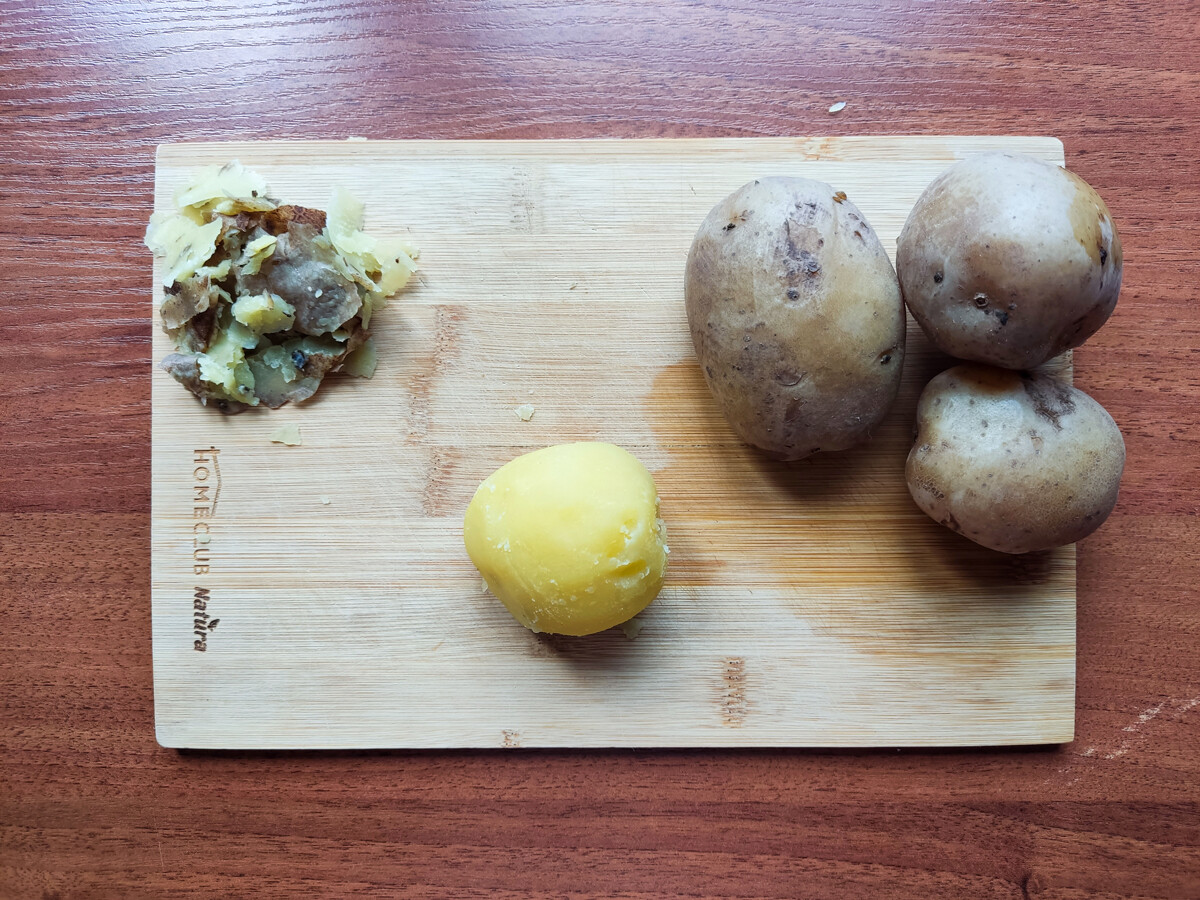
3. Take a large wooden mortar and pestle, or a sturdy bowl and a pestle. Place the potatoes in the mortar or bowl and start mashing with the pestle. This requires some effort since you need to achieve a smooth, sticky consistency. Keep mashing until the potatoes turn into a cohesive mass. As you mash the potatoes, sprinkle in a pinch of salt.
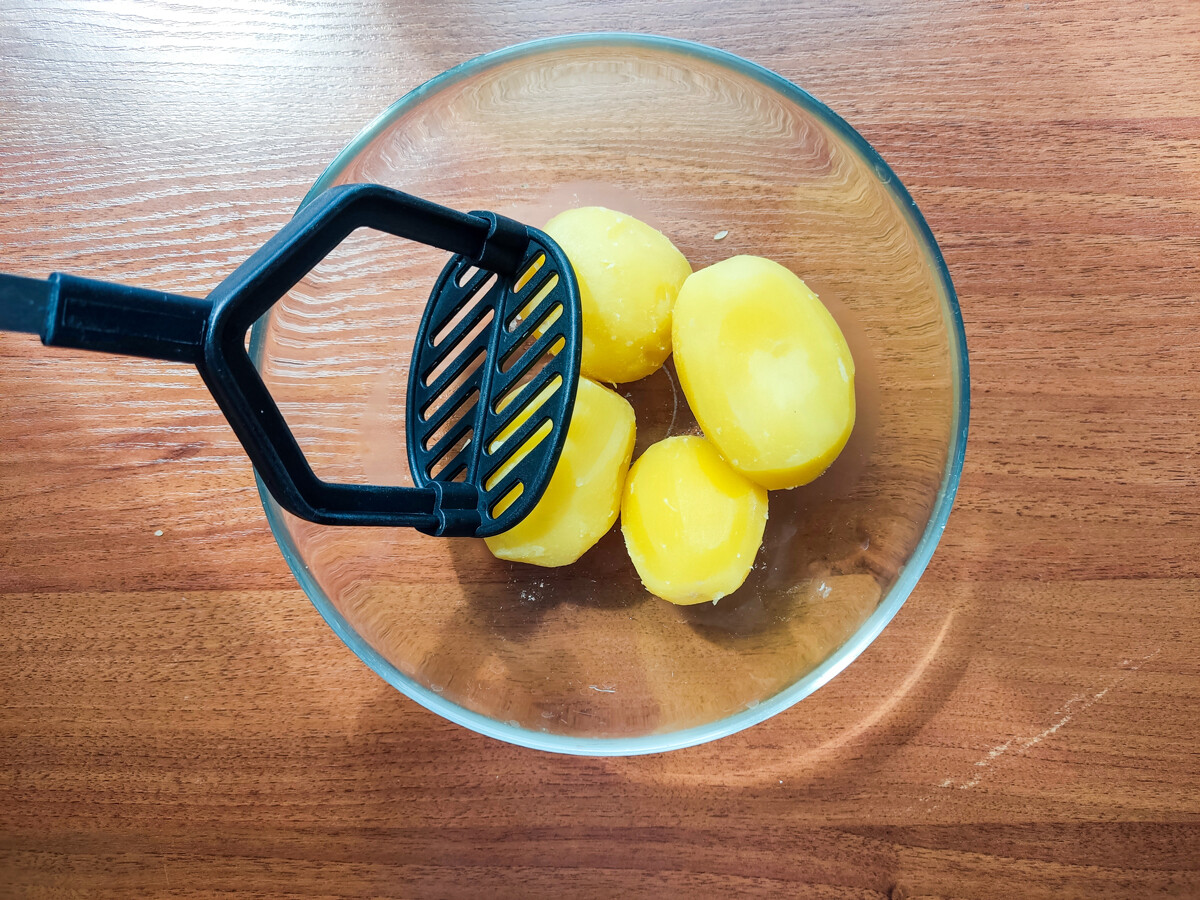
4. After mashing and seasoning the potatoes, take a portion of the mixture and shape it into a sausage-like log with your hands. Repeat this until all the mashed potatoes are shaped into sausages.
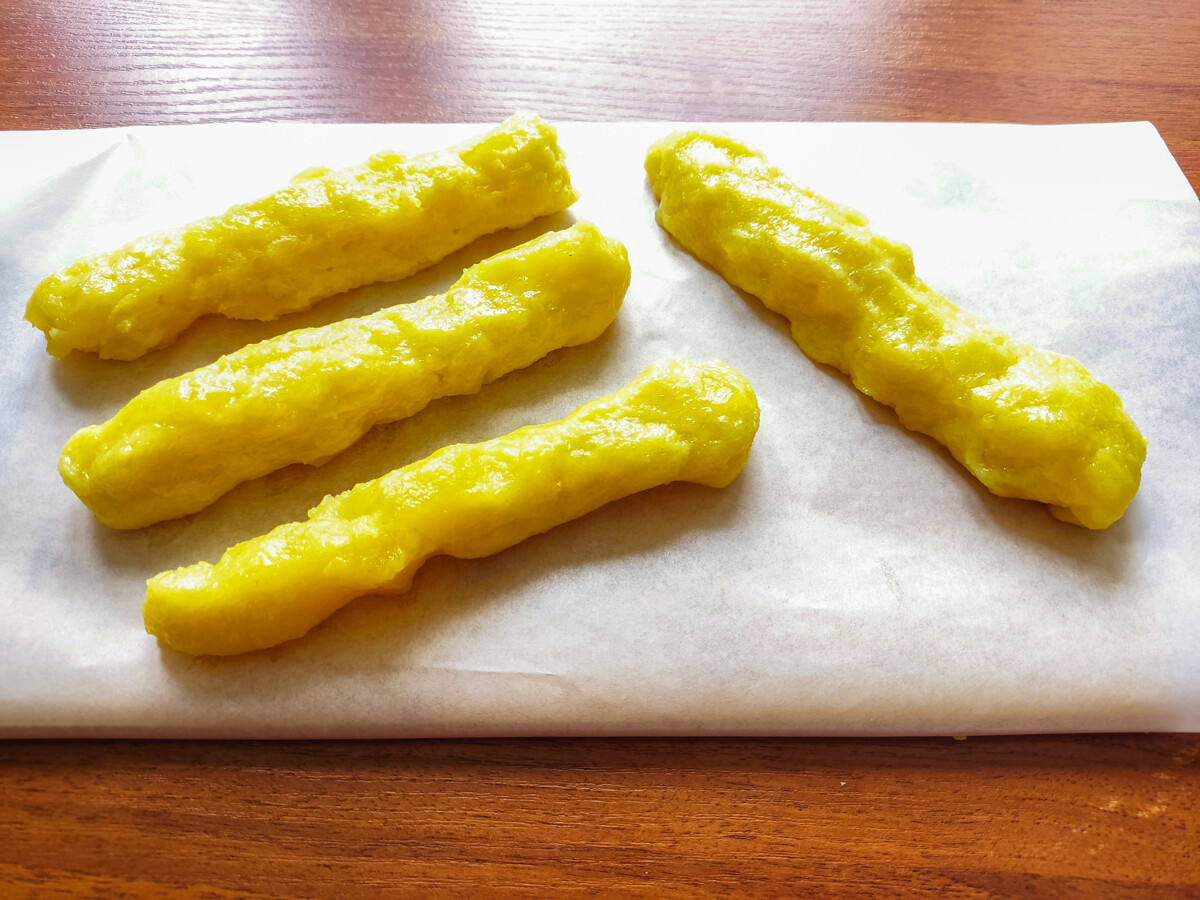
5. Place each sausage-shaped potato log onto a piece of plastic wrap. Roll the plastic wrap tightly around the log, ensuring that it’s completely covered and sealed.
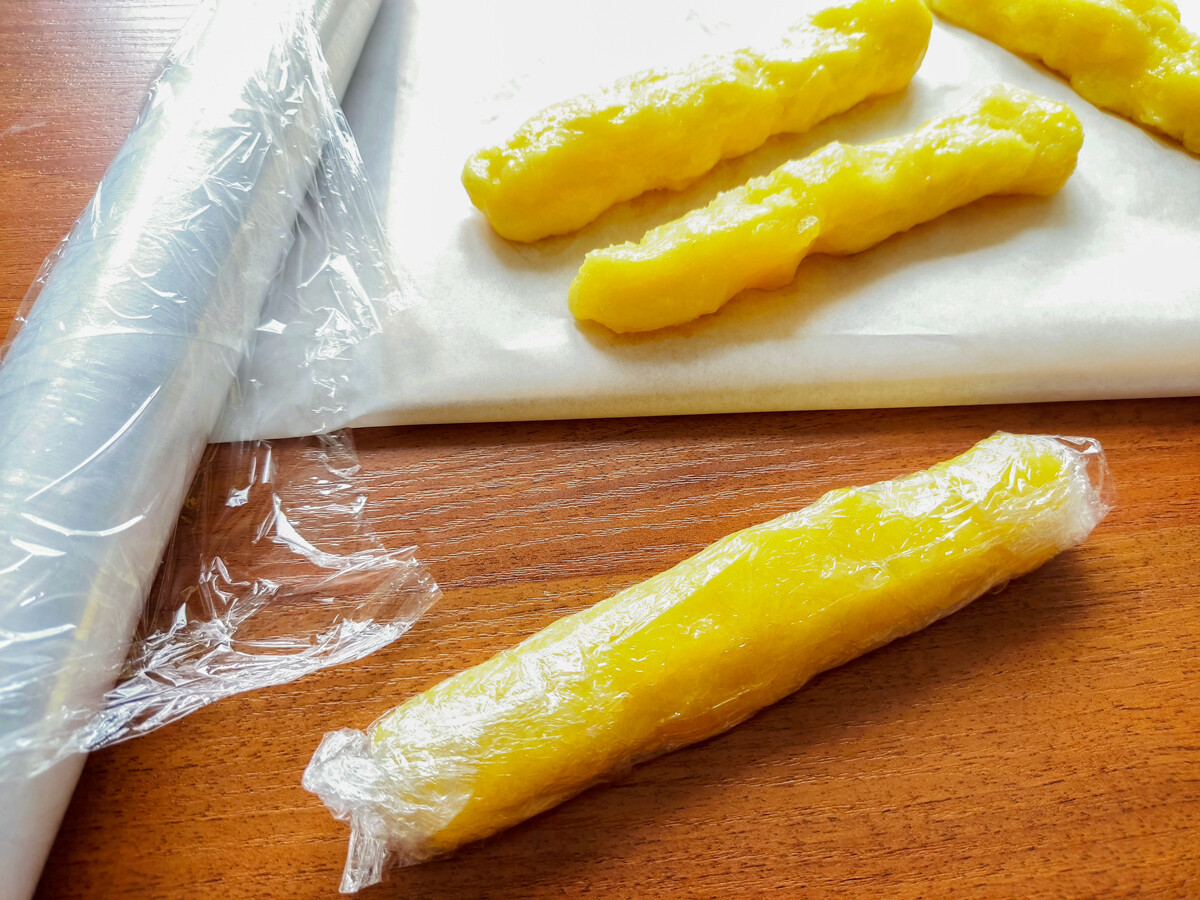
6. Transfer the wrapped potato sausages to a plate or baking sheet, and place them in the refrigerator for about half an hour. This allows the potatoes to firm up and hold their shape better when cutting.

7. After sufficiently chilled, take the potato sausages out of the refrigerator and remove the plastic wrap. Using a sharp knife, carefully slice the potato sausages into individual servings, creating round or oval-shaped pieces. Arrange the cut Talalui pieces on a serving platter or individual plates.
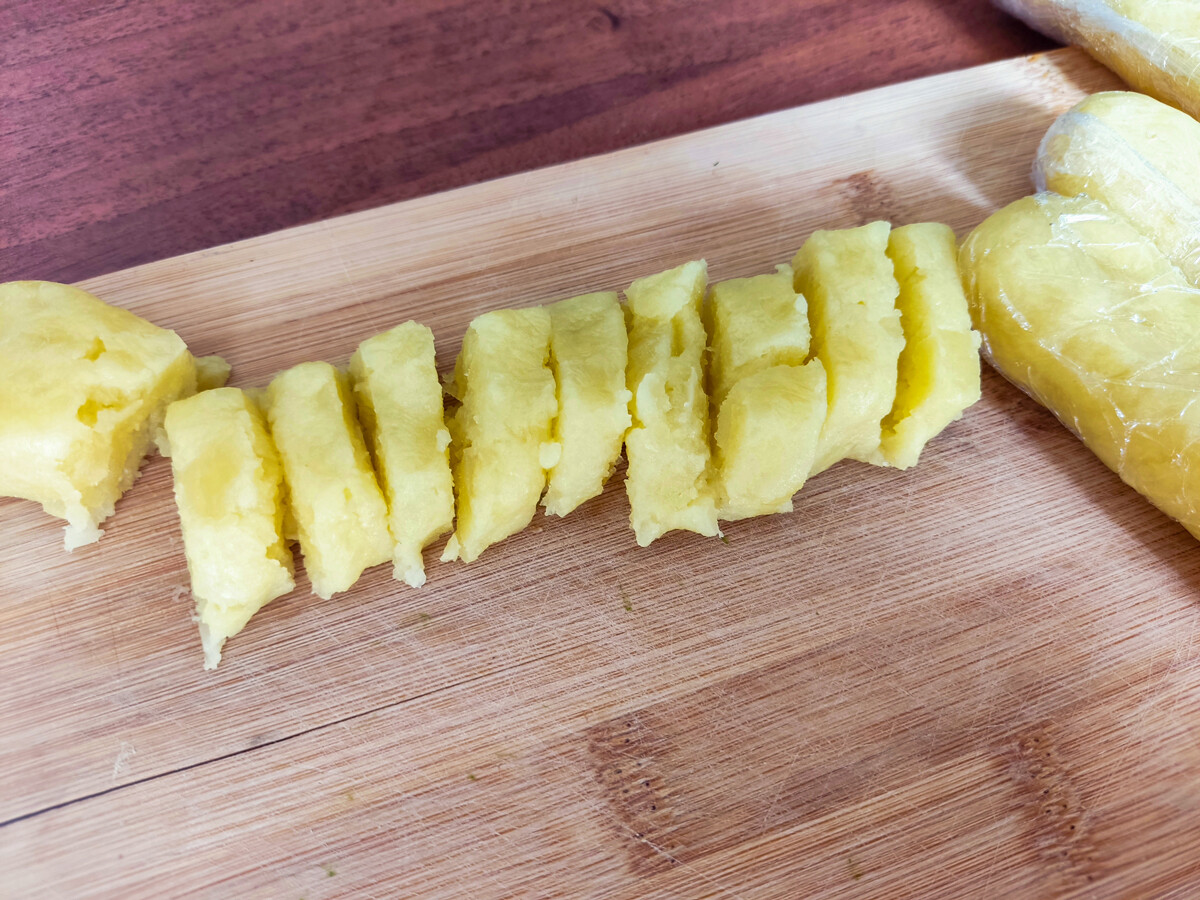
8. Cut the pickles and the greens.

9. Lay out the cut pickles and greens on a plate with your Talalui.
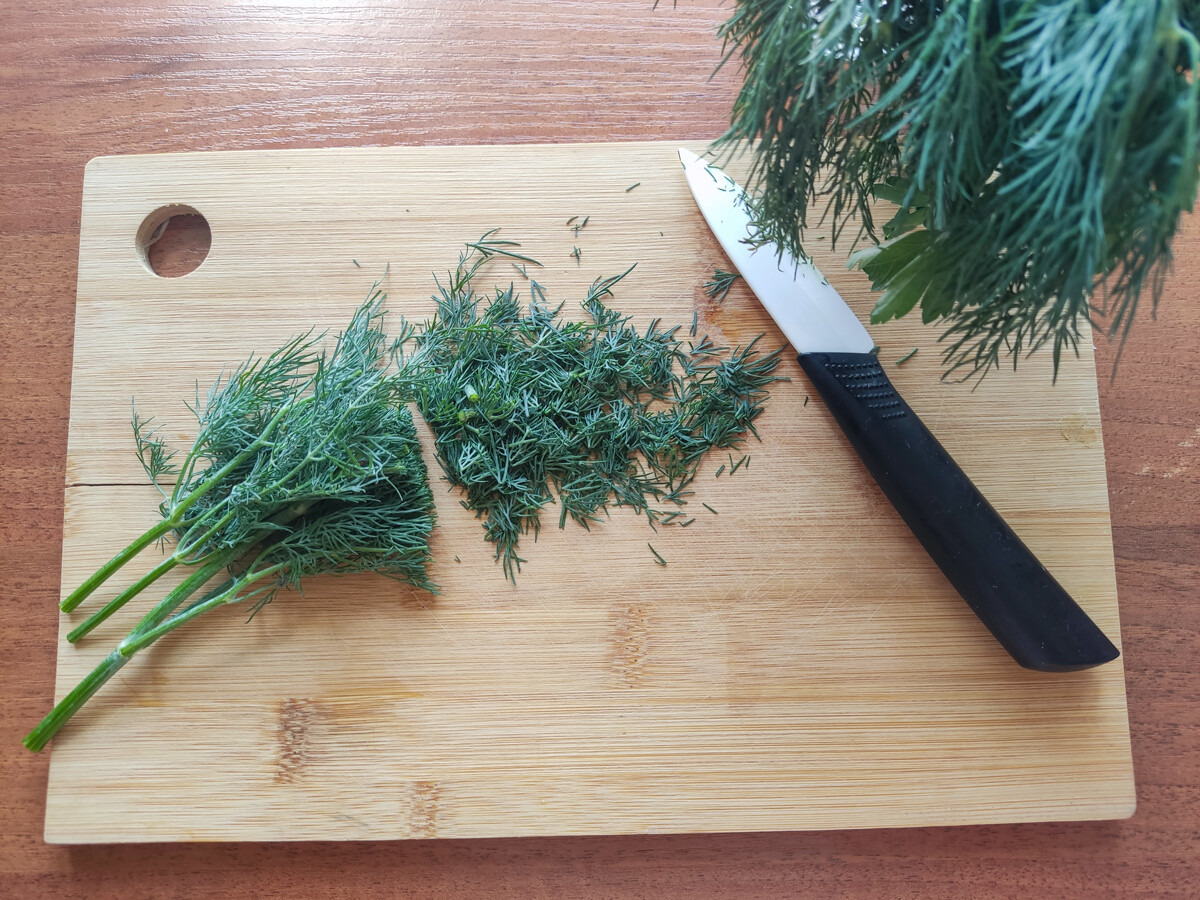
10. Add flaxseeds to the mixture. Drizzle flaxseed oil over the mixture. The oil adds a rich and distinct flavor to the dish.
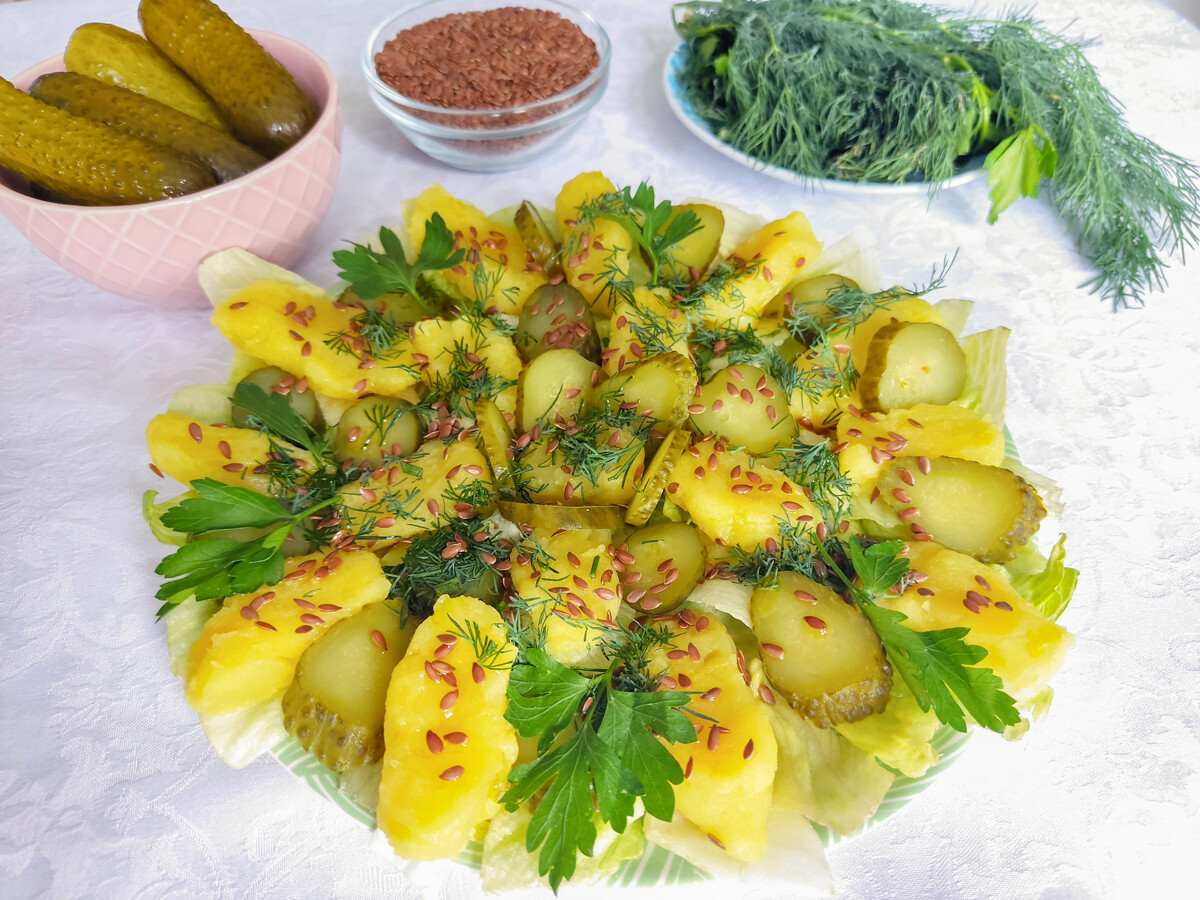
11. Serve your Talalui at room temperature and enjoy it as a main dish or as a side dish with other traditional Russian food. Enjoy!
Dear readers,
Our website and social media accounts are under threat of being restricted or banned, due to the current circumstances. So, to keep up with our latest content, simply do the following:
Subscribe to our Telegram channels: Russia Beyond and The Russian Kitchen
Subscribe to our weekly email newsletter
Enable push notifications on our website
Install a VPN service on your computer and/or phone to have access to our website, even if it is blocked in your country
If using any of Russia Beyond's content, partly or in full, always provide an active hyperlink to the original material.
Subscribe
to our newsletter!
Get the week's best stories straight to your inbox